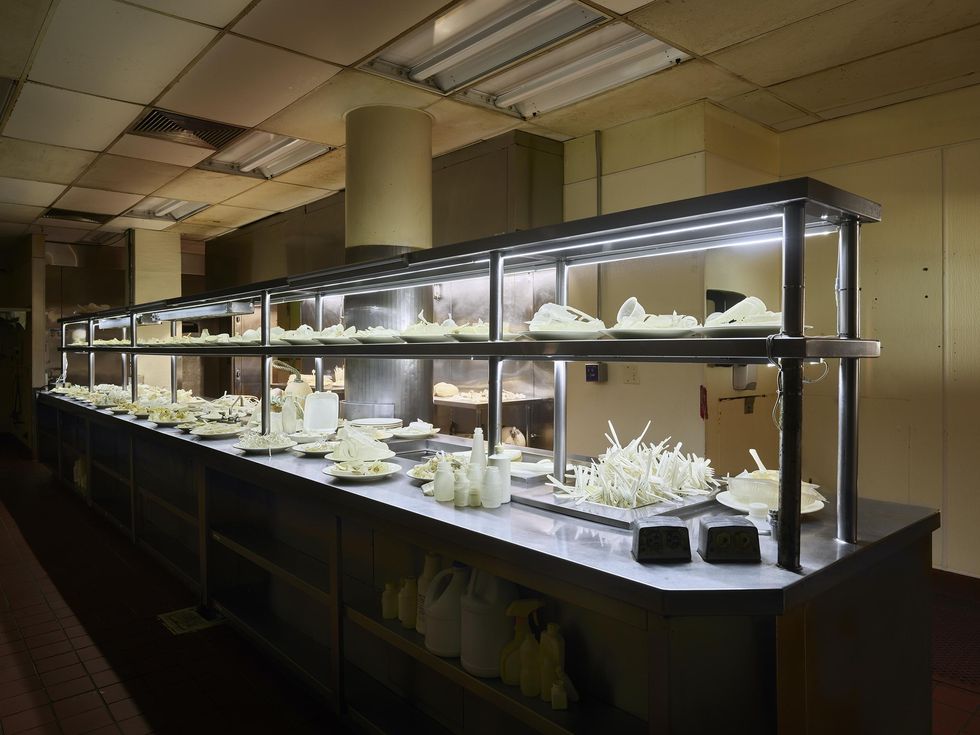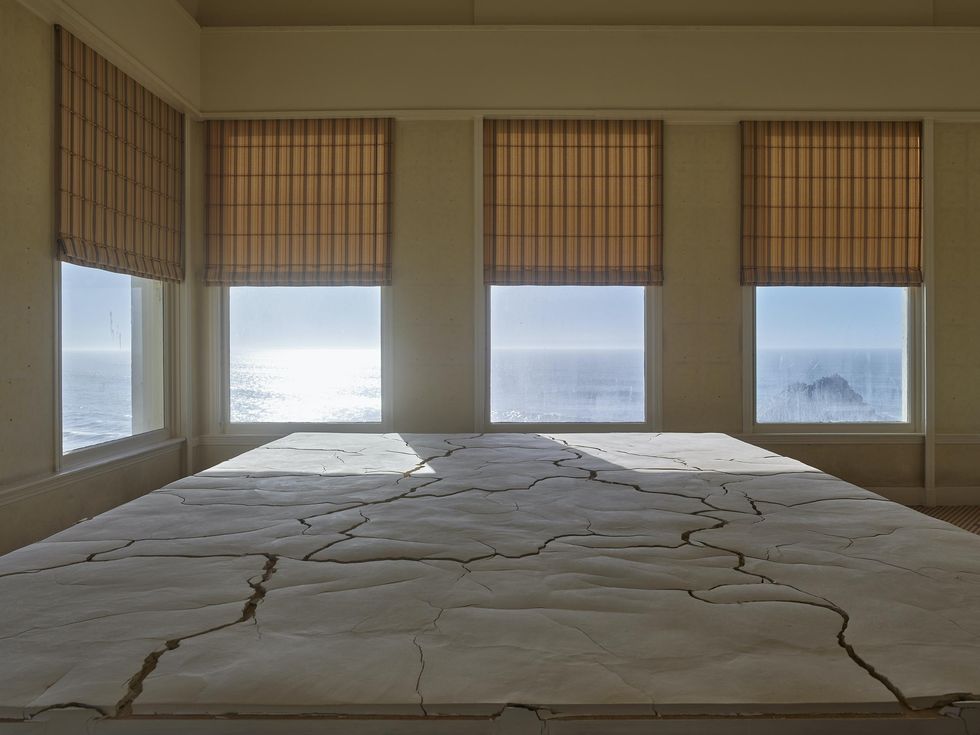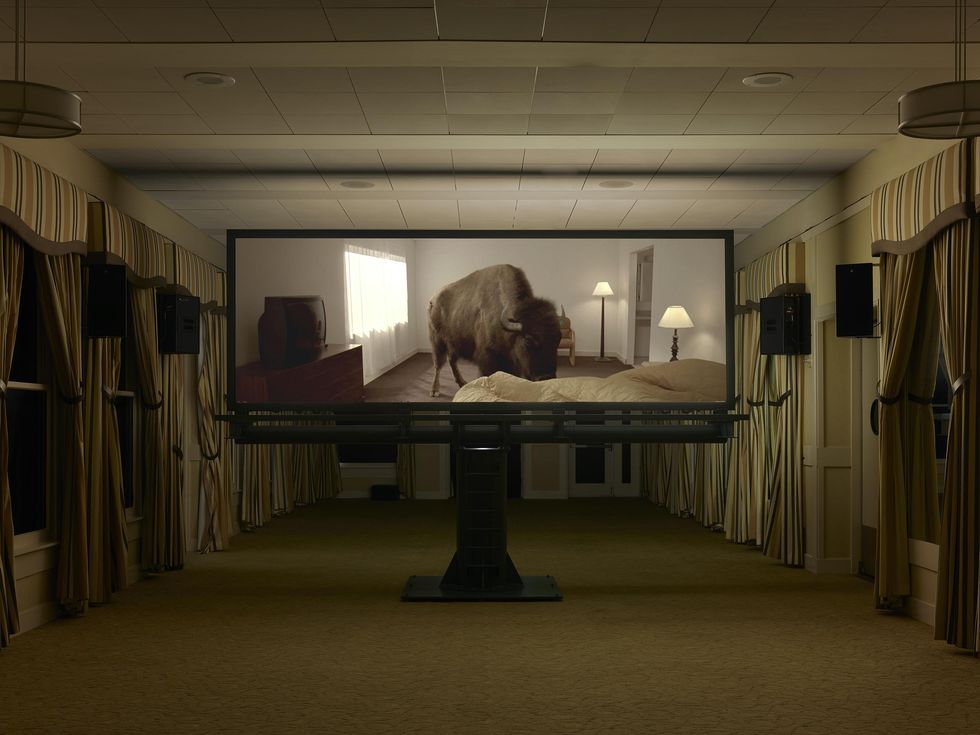Cheryl Haines has been thinking about staging an exhibition addressing climate change for years. But because of the heavily site-specific nature of the San Francisco gallerist's curatorial practice, she was holding out for a venue that would resonate with the topic.
When the historic Cliff House restaurant at Ocean Beach shuttered in January, it was the first gust of a perfect storm to bring the show together. Working in record time, Haines filled the landmark building with works confronting the climate crisis from an international roster of artists. Land's End, the most recent project of her ambitious For-Site Foundation, opened November 7th.
Haines founded For-Site in 2003 as an artists residency in Nevada City, partnering with Bay Area institutions to exhibit the work. After years of successful programming, For-Site began expanding its reach, starting with educational programming and eventually staging major public exhibitions. In 2008, Haines' foundation was invited to install sculptures in San Francisco's Presidio, beginning a long-lasting relationship with the Park's Department that has resulted in such acclaimed exhibitions as @Large: Ai Weiwei on Alcatraz (2014) and Goldsworthy in the Presidio (2015).
"We began to see opportunities in historic buildings and areas of the park that weren't heavily visited," Haines said. "That gave birth to the notion of activating some of these historic structures with artists who could illuminate ideas in the present."
Land's End features the work of 26 artists; eight of them created new work specially for the show. The scale is impressive, but even more impressive is the quickness with which it came together, mirroring the urgency Haines feels about the subject matter.
In the early months of the COVID-19 pandemic, Haines moved to a 50-acre property near Nevada City.
"I was very much immersed in seeing what was happening to a landscape I knew very well," she said. "The land was incredibly dry. I was evacuated twice from my property during wildfire season. It was frightening, really. I became even more convinced that I had to do something as soon as the opportunity was presented. This was an unprecedentedly fast rollout."
She secured the former Cliff House as a location for the show in May of this year. By June, she was at work bringing in artists. By September, the exhibition was being installed.
"We have a robust rolodex of people who like our work and understand that we work quickly and have a very high bar of excellence," Haines said. "That was a tremendous gift."

Set against the backdrop of the crashing Pacific, many of the works on view—from small oil paintings to large-scale mixed media installations—are by California-based artists, an intentional selection in order to minimize the ecological footprint during the staging process as well as to highlight individual responses to local ecology.
In the new piece "For Here or to Go," the artist duo One Beach Plastic filled the Cliff House's industrial kitchen with plastic refuse they have collected from the sands of Kehoe Beach in Inverness; over the years, the team has collected a total of over two tons of plastic there. The historical document of degradation illustrates both atrophy and intervention in action—and it implicates everyone. There is a sort of dark humor here in the execution of the piece, disarming the viewer and inviting consideration.
All of the artworks dialogue with each other as well as with the natural world. Andy Goldsworthy collaborated with Heath Ceramics to create "Geophagia," in which the tabletops in the dining room have been covered with thick layers of clay left to dry and crack naturally. These landscapes are situated beneath windows overlooking the ocean, creating a dissonance between images of draught and rising sea level.
"This is not a tranquil site," Haines said. "You do feel quite raw and exposed on this precipice."

The installation of the show was disrupted in October amid record-setting rainstorms. "I really felt beleaguered and it made me even more conscious of the fragility and violence that exist in nature and how important it is for us to respect that and do our small part to not aggravate it further."
Doug Aitkin's video "Migration" (2008) is a visually poetic series of extended shots of wild animals that the artist loosed inside vacant motel rooms. The film suggests a return to nature and uses visual rhetoric to make us wonder about our own position in the ecosystem and the disruption that our actions can promote. It's a message that is amplified by the abandoned nature of the Cliff House itself.
True to form, For-Site has located the exhibition in a site with geographical and structural resonance. Atrophy has been fast-acting on the Cliff House, with cracks in the walls and the absence of many fixtures; during installation of Land's End, the roof sprung a leak. One look at the seething waves beyond the windows and it is easy to imagine the place being washed away. But the show isn't a cautionary tale so much as an opportunity to pause for reflection.
"Instead of providing answers, I hope this exhibition poses questions," Haines said, "because I think the most powerful opportunities for change come from within. I would hope for people to have a greater understanding of our interconnectivity and that climate change isn't someone else's problem. It's all of ours. If we want to leave this place to the next generations in a way that is inhabitable, each one of us has to change something."
Land's End uses art to prompt individual considerations about climate change rather than admonishing visitors—a tactic too-often employed.
"Wooing the viewer with some amount of beauty and grace is far more powerful than being didactic and enforcing guilt," Haines said. "One needs to open one's heart and one's mind to consider what can be done."
// "Land's End" is open via free timed entry, 11am to 5pm Thursday to Sunday, through March 27, 2022; 1090 Point Lobos Ave., for-site.org.






















